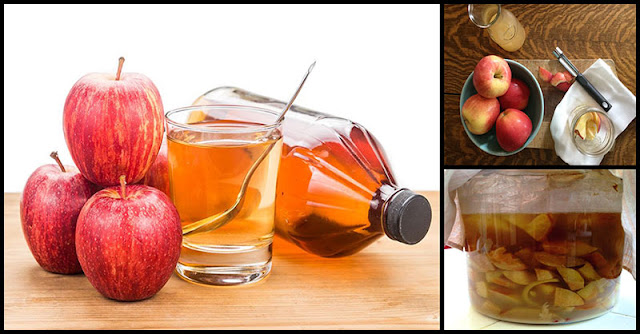Apple cider vinegar or ACV can be found in the supermarket. However, most of them are pasteurized and highly filtered. Though these versions still work well for cleaning purposes, they are not the best choice when it comes to internal as well as culinary uses because once the “mother” is filtered out and the vinegar is pasteurized, most of its benefits are gone.
A few ACV “with the mother” are available. This means that it contains beneficial bacteria developed during the fermentation process in the vinegar.
But if you want to be sure that your vinegar retains this beneficial “mother,” then you can make your own ACV.
What Is So Special About Apple Cider Vinegar?
Apple cider vinegar (ACV) has many healthy uses. It undergoes the process of fermentation and is high in calcium, magnesium, potassium, and phosphorus.
Important Notes:
- Sugar is needed for this recipe. It is necessary to “feed “the bacteria, however, most of the sugar are fermented out. You can use honey but it really does not work as well and causes the whole process to take longer. Sugar is not really anything to be concerned about because it is broken down.
- For the applesauce, you can use apple varieties such as Gala, Fuji, Honeycrisp, Granny Smith, and McIntosh.
- See to it that all the jars and equipment you’ll be using are very clean so that you don’t introduce any bacteria other than what is naturally occurring in the process.
- You may notice white scum forming on top. This is just normal. But mold is not good and will spoil your ACV. Apple should stay submerged under the water so that the formation of mold can be prevented. Set a clean smaller glass jar or fermentation weight on top of the apple to
- Make sure that your jar is well covered as gnats and flies love ACV. Yet, do not use a solid lid because it needs to be able to breathe and release gasses created from the fermentation process. Coffee filter or cheesecloth can be used.
Apple Cider Vinegar Recipe “With The Mother”
Supplies:
Clean jar – you can use any size jar
Organic apple scraps – enough to fill your jar ¾ of the way full
Organic cane sugar
Filtered water
Cheesecloth or coffee filter
Fermentation weight or small glass jar
Rubberband
Instructions:
- Wash and roughly chop your apples into one-inch pieces. Place them in a clean jar.
- Mix the sugar with 1 cup water and pour on top of the apples. You must add more water so that apples are covered by about an inch.
- Cover the jar with a paper towel secured with a rubber band in order to keep fruit flies away.
- Some of the apple chunks might float to the top, depending on how small they are. You can use a fermentation stone or small glass jar to keep them fully submerged, thereby preventing mold from forming in the vinegar.
- Place the jar in a warm pantry for 2 weeks. Strain out the liquid and discard the apple pieces.
- Return the liquid to the same jar. Cover it again and place it back in the pantry. Continue fermenting for an additional 4 weeks, stirring every few days. After 4 weeks, taste test your vinegar. Once it reaches an acidity you like, transfer to a bottle and begin using it.









